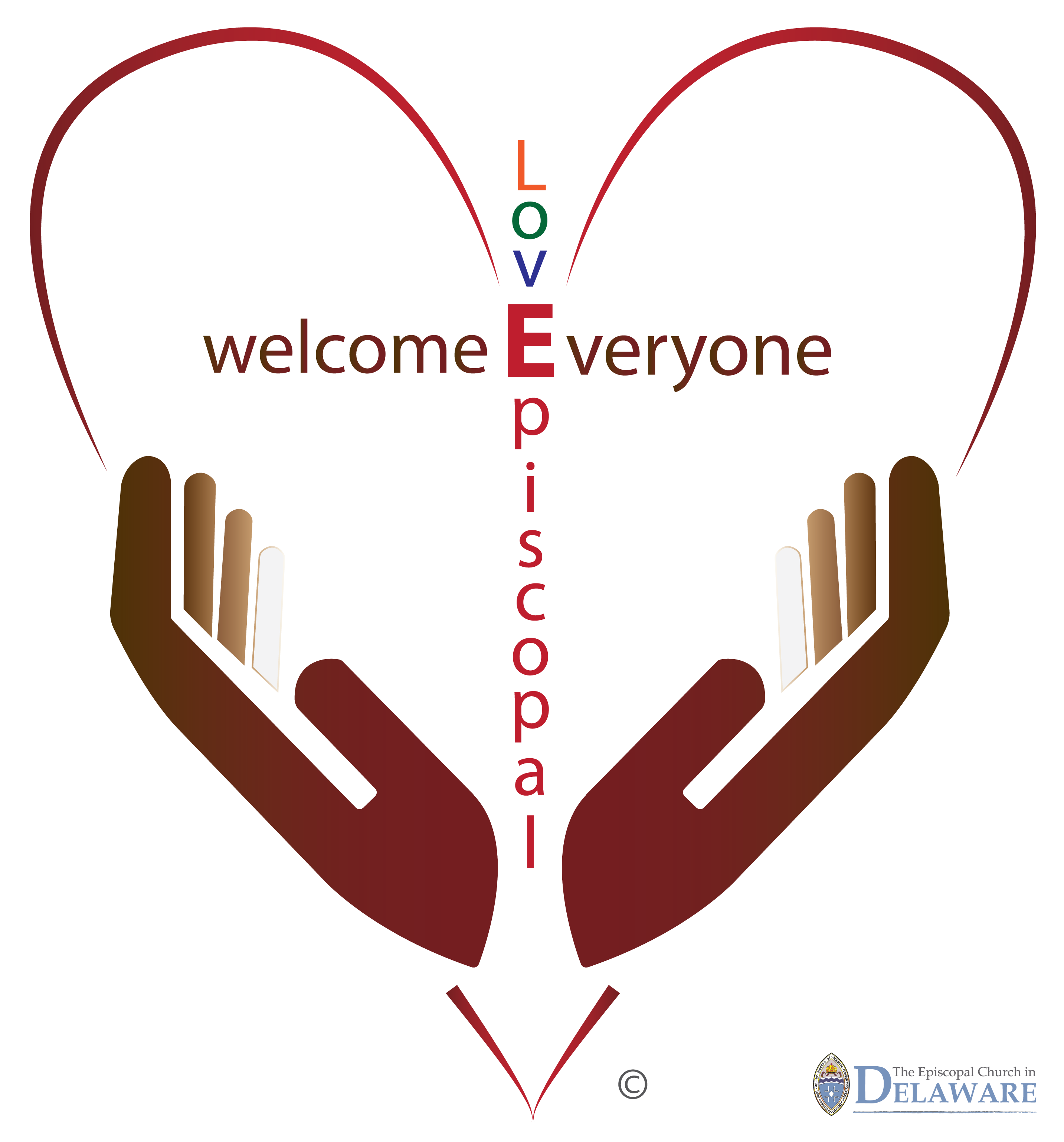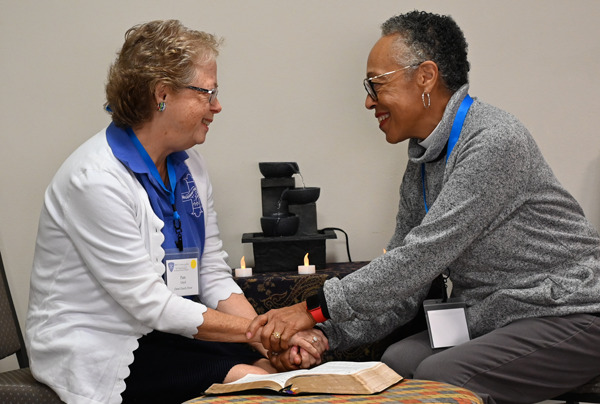|
March 11, 2022 | Returning to the Common Cup
Beloved of God in Delaware,
I am pleased to announce that, effective Maundy Thursday, April 14, 2022, the prohibition on serving wine at communion will be lifted. At that time, all Episcopal parishes in Delaware will serve wine whenever Eucharist is celebrated. Of course, if you are not comfortable receiving wine at this time, do not worry. Communion in one kind (that is, receiving bread only) remains, as it always has been, a perfectly valid and holy way to participate in the Lord’s Supper.
COVID-19 and Community Spread
The prohibition on serving wine began two years ago due to safety concerns during an exploding pandemic of a deadly virus we knew little about. Since then, thank God, not only have we come to know a great deal about the COVID-19 virus and how it is spread, but also we have effective vaccines and boosters widely and freely available. We have learned how to track the disease’s prevalence among us (the all-important “community spread” measures) and what to do if and when new variants spring up.
Community spread is tracked for every United States county by the Centers for Disease Control and Prevention (CDC) “Community Level” measure, available at cdc.gov.1 All three Delaware counties and many others across the country have a low community level. In fact, the majority of counties in the United States are presently either at low or medium community levels. This is good news indeed, and it reflects both the prevalence of vaccinated people and our greater collective knowledge.
As a church and a nation, we are moving closer to the time when COVID is treated like other infectious diseases. The risk of contracting this virus or any other virus will likely never be zero, but we certainly can be smart about safety. For example, scientists now know that while COVID spread is technically possible in a brief encounter with an infected person (such as a handshake or even a hug), dangerous spread is only likely when an unvaccinated person has sustained exposure (about 15 minutes) to the aerosol transmission (breath) of a symptomatic person with COVID. As with all diseases, folks at higher risk of contracting COVID—unvaccinated or immunocompromised persons, for example, or those who care for them—should continue to take extra precautions to protect themselves.
Speaking of personal precautions, wearing a mask still tops the list (after getting vaccinated) of individual ways to be safe. Masks are currently recommended by the CDC as optional per the same guidelines noted above; regardless, one’s choice to mask will always be honored.
There are many good reasons to choose to mask. For example, many people have said over the last two years that they intend to wear a mask in crowded situations to help avoid all air-borne contagious diseases. As of this time, parish leadership may still opt to require masks for everyone during worship.
The Common Cup
For centuries, the church safely served wine to parishioners via shared chalices, even during spikes in flu and other diseases. While I am certain it was wise to suspend the chalice for COVID-19, I am confident we can now return to the common cup safely for three key reasons:
- First, as noted above, vaccines are effective, widely available, and free.
- Second, science has made us smarter about the risks. For example, we do not need to be unduly concerned about surface transmission of the virus. Our prayer books and hymnals have returned to our pews because we have learned that the risk of picking up the virus is very small once it is no longer airborne.
- Third, history and experience show that we know how to share the cup together safely. We have been serving wine to the whole church (not just to clergy) consistently for at least 500 years, and the track record of safety is remarkable. In 1998, the CDC investigated the riskiness of sharing a common cup, based on concerns stemming from the AIDS epidemic. At that time, the CDC stated that no outbreak of infection related to the communion cup had ever been reported. Still, the CDC was clear that even without a known outbreak there still existed the risk, at some level, of transmitting an infectious disease by sharing a common communion cup. However, the risk was seen to be so small as to be undetectable.2 In the 24 years since the report, this is still the case.
Protocols for Serving the Common Cup
The most important safety measure when serving the chalice is wiping the chalice rim well and rotating the chalice for each communicant. Our Eucharistic ministers and Eucharistic visitors have long been at the front line of our communal safety. It is no accident that the church takes their training and licensing so seriously. Returning to the common cup will be safe and simple to do because we are returning to the best practices that sustained us before, with the added expectation that clergy and lay servers will sanitize their hands immediately before and just after serving wine. (The same of course should be true for serving bread.) Using a clean purificator, servers will firmly wipe the inside and outside rim of the chalice after every communicant sips, and then they will rotate the chalice a quarter turn before presenting it to the next communicant. These simple steps are important! I ask that rectors and their Eucharistic ministers use the next five weeks to retrain themselves and practice these simple but critical steps.
Where intinction is practiced, an important additional measure is needed. Communicants who choose to intinct must take special care that their fingers not touch the wine or chalice. Chalice bearers can greatly help in this regard by making sure to present the chalice below the communicant’s eye level, and parishes can greatly help by serving large wafers instead of small ones. Parishes may want to offer simple instructions in their bulletins and verbally to help all communicants receive the wine carefully. This can be done in a warm and invitational manner that relays the care that the parish is taking with this holy sacrament.
“Do this in remembrance of me.”
As you see, returning to the common cup is rather straightforward. We follow the chalice-serving practices that we have used safely and effectively for generations, following them with determination (training and practice) and grace (the love of Christ Jesus for one another). Be kind to yourselves and each other as you retrain yourselves to serve and receive this holy sacrament.
Returning to the shared chalice is an important moment in our common life. Doing so at the mass on Maundy Thursday is a powerful reminder of the Eucharist’s central role in our faith. The collect for this holy day reminds us that Christ himself gave us the holy mystery of the Eucharist, and we pray on that day “that we may receive it thankfully in remembrance of Jesus Christ our Lord.”
Your brother in Christ Jesus,
+Kevin
1 https://www.cdc.gov/coronavirus/2019-ncov/your-health/covid-by-county.html
2 “COVID-19 and Holy Communion” at https://www.ncbi.nlm.nih.gov/pmc/articles/PMC7439816/





